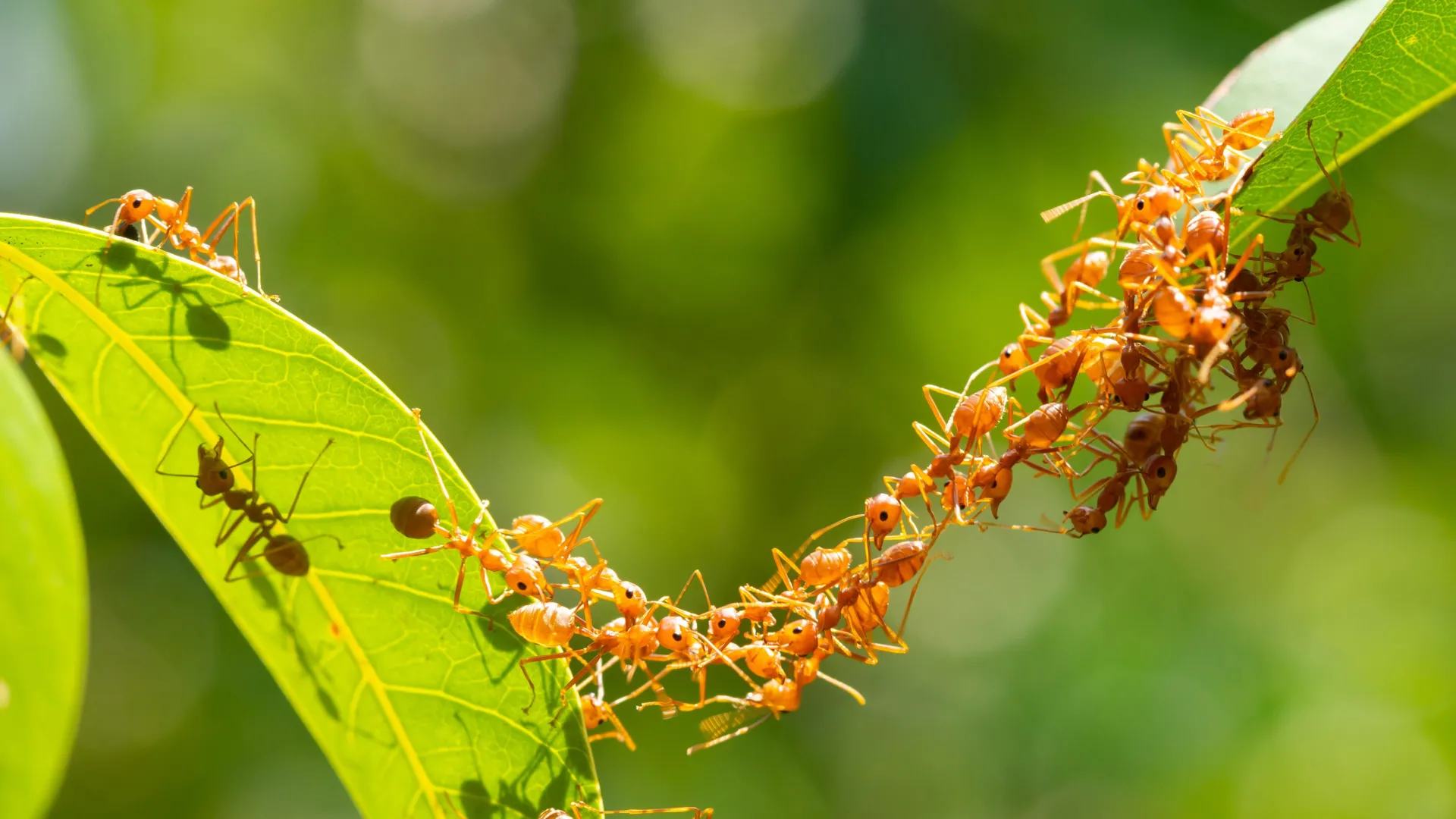The surprising ant strategy that could transform robotics
Weaver ants increase their individual strength as teams grow larger and by cracking the secret to superefficient teamwork, they offer insights that could transform robot design.
- Date:
- August 15, 2025
- Source:
- Macquarie University
- Summary:
- Weaver ants have cracked a teamwork puzzle that humans have struggled with for over a century — instead of slacking off as their group grows, they work harder. These tiny architects not only build elaborate leaf nests but also double their pulling power when more ants join in. Using a “force ratchet” system where some pull while others anchor, they outperform the efficiency of human teams and could inspire revolutionary advances in robotics cooperation.
- Share:

Weaver ants have solved a problem that has plagued human teams for centuries: individuals contribute less to tasks when more people join in. New research published in Current Biology on August 12 shows individual weaver ants instead get stronger as their group grows.
"Each individual ant almost doubled their pulling force as team size increased - they actually get better at working together as the group gets bigger," says lead author Madelyne Stewardson from Macquarie University.
The longstanding problem in human teams was first published by French engineer Max Ringelmann in 1913 who measured students pulling on ropes and found that while total force increased as more people joined in, each individual's contribution actually decreased.
The study shows weaver ants form super-efficient teams in which individuals actually increase their contributions as teams grow bigger, defying the declining performance affecting human teams.
These tiny, tree-dwelling ants (Oecophylla smaragdina) found in tropical Africa, Asia and Australia, are known for their nest-building behaviors, forming living chains to roll leaves and glue them with silk from their larvae.
Stewardson and behavioral ecologist Dr Chris Reid from Macquarie's School of Natural Sciences worked with an international team to measure the force different sized ant teams could apply while building nests.
The researchers set up experiments enticing weaver ant colonies to form pulling chains to move an artificial leaf connected to a force meter.
"The ants split their work into two jobs: some actively pull while others act like anchors to store that pulling force," says Stewardson.
How the ant team makes it work
Co-lead author Dr Daniele Carlesso from the University of Konstanz developed a theory called the 'force ratchet' to explain this mechanism.
"Ants at the back of chains stretch out their bodies to resist and store the pulling force, while ants at the front keep actively pulling," says Dr Carlesso.
Dr David Labonte from Imperial College London, co-author on the paper, says the team found this method was key to increasing the contribution per individual as the team got bigger.
"Longer chains of ants have more grip on the ground than single ants, so they can better resist the force of the leaf pulling back," he says.
Dr Reid says the discovery could help scientists design better robot teams. Current robots only output the same force when working in teams as when alone.
"Programming robots to adopt ant-inspired cooperative strategies could allow teams of autonomous robots to work together more efficiently," says Dr Reid.
Story Source:
Materials provided by Macquarie University. Note: Content may be edited for style and length.
Journal Reference:
- Madelyne Stewardson, Daniele Carlesso, David Labonte, Chris R. Reid. Superefficient teamwork in weaver ants. Current Biology, 2025; DOI: 10.1016/j.cub.2025.07.038
Cite This Page: